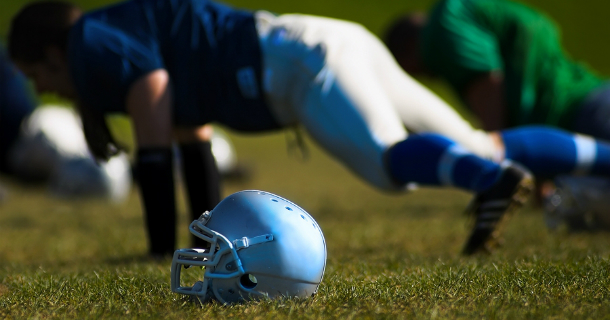Groin Pain in the Adolescent Athlete
Adapted from the Summer 2011 issue of Pediatric Connection
It has been reported that groin injuries account for 5% to 9% of all injuries among high school athletes. However, a systematic review suggests that, historically, “groin” injuries have been defined poorly.

As recently as five years ago, children or adolescents complaining of groin pain were advised to stretch, ice, and take a rest from the activity which aggravated the discomfort. When the pain did not diminish, they would either continue to participate in the activity and play through pain or their career in that sport would be at an end.
Due to advances in diagnostic and clinical medicine, it has been discovered that the source of “groin” pain may not be a muscle strain, but could be possibly a tear of the labrum of the hip due to repetitive stress and microtrauma, or secondary to a structural bony anomaly, creating hip impingement. This bony impingement which may occur from the acetabular or the femoral head side or a combination of the two is referred to as femoroacetabular impingement.
How to Identify a Labral Tear
Children or adolescents who may have labral tears present with complaints of a sharp pain or catching at the front of the hip with walking, running, or pivoting. They often feel achy with prolonged sitting or standing. Their symptoms often limit their ability to perform their sport or activity.
Clinical findings on examination may include pain with hip flexion, adduction, and internal rotation, or pain with pure flexion. An adductor or hip flexor strain or tear may be ruled out with resisted strength testing.
Another entity that may present and be confused with a labral tear is a sports hernia (athletic pubalgia). The differential diagnosis between an intra-articular hip pathology and athletic pubalgia may be a challenge and requires a meticulous clinical exam.
The Hip Preservation Service at HSS specializes in the diagnosis and treatment of hip pain in a variety of patients, including the pediatric and adolescent population. Recently, improved understanding of hip abnormalities combined with advances in diagnostic imaging techniques and non-operative treatments, which include rehabilitation and minimally invasive surgical treatments, give many patients new hope for ameliorating chronic, misdiagnosed hip pain. Our hip specialists manage structural injury to the hip and get patients back to their chosen activities.
Reference:
Maffey L, Emery C. What are the risk factors for groin strain injury in sport? Sports Med 2007;37(10):881-894.
Posted: 7/18/2011
Authors
Jaime Edelstein, MSPT, COMT, CSCS
Physical Therapist, Rehabilitation Department
Hospital for Special Surgery